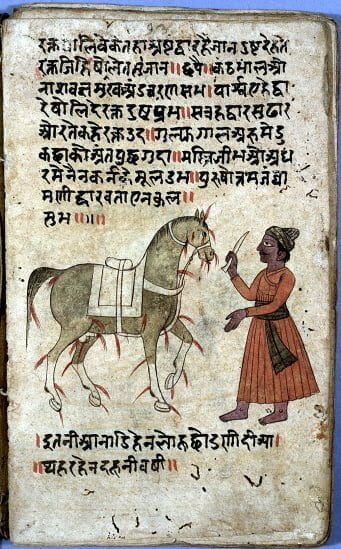Sanskrit Language, often called the “mother of all languages,” is a very old and important language. It has deep history with lots of culture behind it. Its origin goes back to the old history of India’s subcontinent. Also, its effects reach many places beyond just India itself.
In this article, we will learn where Sanskrit came from and how it has been used over time. We’ll also share 10 interesting points that might shock you.

Sanskrit language was termed as Deva-Vani (language of God’s) as it was believed to have been generated by the God Brahma who passed it to the Rishis and Munis.
The language was made by watching how sounds happen in people’s mouth, so considering sound as a big part of creating words or speech.
The main reason why Sanskrit has been full of poetry is because its perfect sounds that are nice to listen make things clear in the best possible way.
Origin and Historical Significance of Sanskrit
Linguistic Roots:
Sanskrit, a language from the Indo-Aryan part of the Indo-European family, is one of humanities oldest talked about languages. Its history goes back to the Vedic writings, mainly from around 1500 BCE in Rigveda.
Sacred Language:
Sanskrit is seen as a holy language in Hinduism, and many old religious books like the Vedas, Upanishads and Puranas were written using this. It is the language of old Indian thought, science and writing.
Pan-Indian Influence:
Sanskrit was not just for one area, it moved around the Indian subcontinent and affected many local languages. Many today’s Indian languages like Hindi, Bengali and others have links to Sanskrit. These include Hindi as well as Marathi and Kannada too.
Sanskrit is a highly inflected language which uses prefixes, suffixes, infixes, and reduplication to form words and to represent grammatical categories
Image credit: Wikimedia commons
Contemporary Use and Preservation of Sanskrit Language:
Even though it’s very old, Sanskrit hasn’t disappeared completely. In modern times, efforts have been made to bring back and encourage Sanskrit education. Many schools and places give lessons in Sanskrit, both in India and other countries.
Cultural Significance:
Sanskrit remains an important part of Indian culture heritage. Classic dance, music and drama often take ideas from Sanskrit literature. This shows the long lasting cultural importance of this language in our society.
Global Interest:
Sanskrit has become known and liked all around the world. People around the world study Sanskrit because of its depth in language, strong ideas and long history. It has turned into a link between various cultures and a place for talking across different societies.

Fascinating Facts about Sanskrit:
Scientific Precision:
Sanskrit is loved for its exactness and form. NASA scientist Rick Briggs says that Sanskrit is great for computer programming because of its grammar rules, accuracy and easy understanding.
Linguistic Complexity:
Sanskrit is famous for its difficult grammar and complicated language pattern. Panini, an old person who studied grammar in Sanskrit language wrote the Ashtadhyayi.
This book’s rules for how to use Sanskrit are very important and used today by many people even now.
Numerous Synonyms:
Sanskrit is a language that likes small details. It has a big list of words with lots of other ways to say many things, letting us talk exactly about thoughts and feelings.
Influence on European Languages:
Sanskrit has greatly affected how European languages evolved. Sir William Jones, a famous language expert, found out that Sanskrit and European languages are similar. This helped scientists know more about how words change over time.
Sanskrit shows how language and culture can last a long time. Its old roots, ongoing importance and language variety make it a really interesting topic for students and fans.
As we look deep into Sanskrit, we find not just a language but something that is alive which has changed how people think and feel in the Indian part of Earth.
References : https://en.wikipedia.org › wiki › Sanskrit Central Sanskrit University





